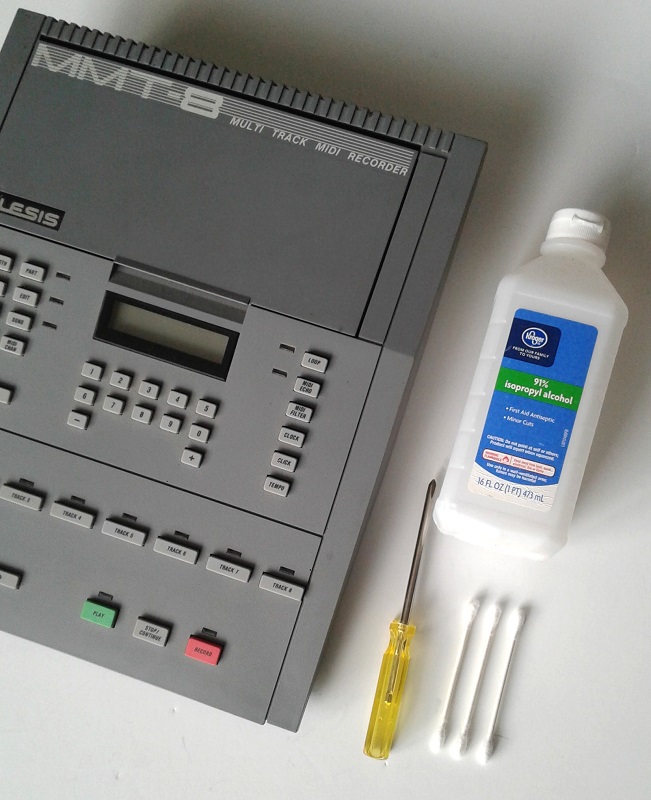
I've seen quite a few listings for products on Reverb where the only thing that keeps them from being listed in excellent condition is that the plastic switches can be a little funky—you know, those switches like the ones on the Alesis HR-16, MMT-8, and a slew of other products. They use conductive plastic that sits above traces on a circuit board. When you push the switch down, the plastic goes across the circuit board traces, and closes the circuit.
The problem is that "time happens." For whatever reason, the contacts become dirty, or oxidized, or whatever it does they do that makes your life difficult. Some people scrape off the circuit board traces to remove oxidation, but that's a horrible idea—traces are thin, and eventually, you'll create an uneven metal surface. This also doesn't clean the conductive plastic part of the switch, which is equally important.
So here's a much better way to fix the issue. All you need is:
- 90% isopropyl alcohol (you don't want anything that leaves a residue).
- Some Q-Tips.
- Whatever tools you need to disassemble the device that needs fixing.
These images show how to do this technique with an Alesis MMT-8, and all it needs is a small Phillips head screwdriver. However, the same principle applies to a lot of other gear: Figure out how to get to the surface of the switch's conductive plastic and the circuit board in which it comes with contact. It's amazing how responsive those cheap little switches become after you clean them.
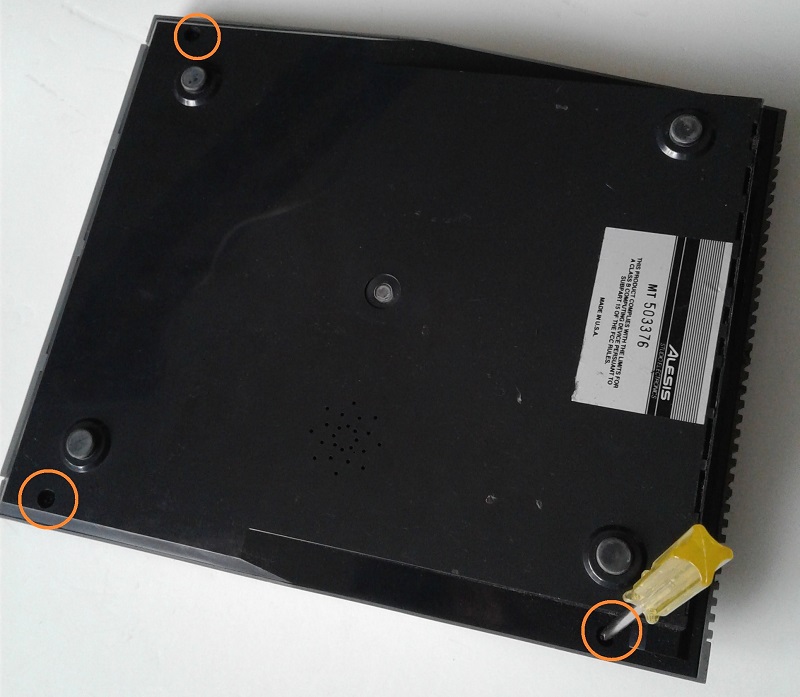

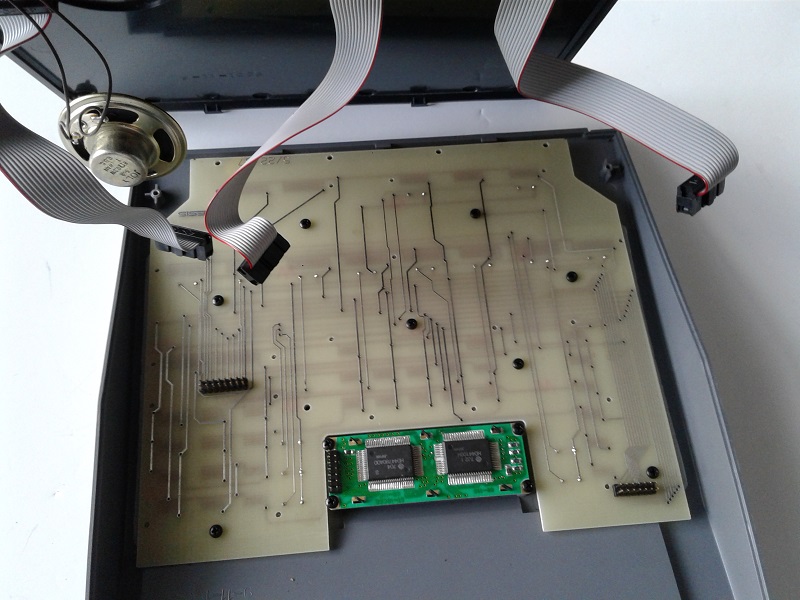
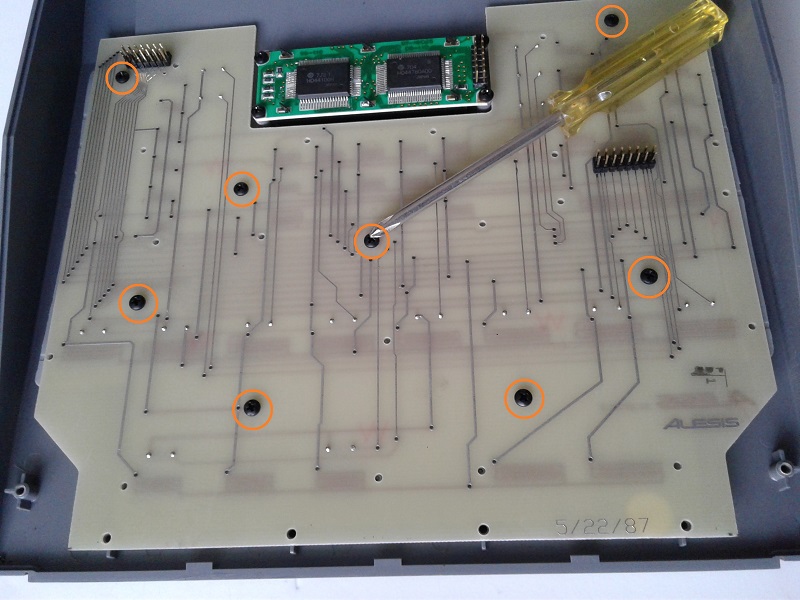
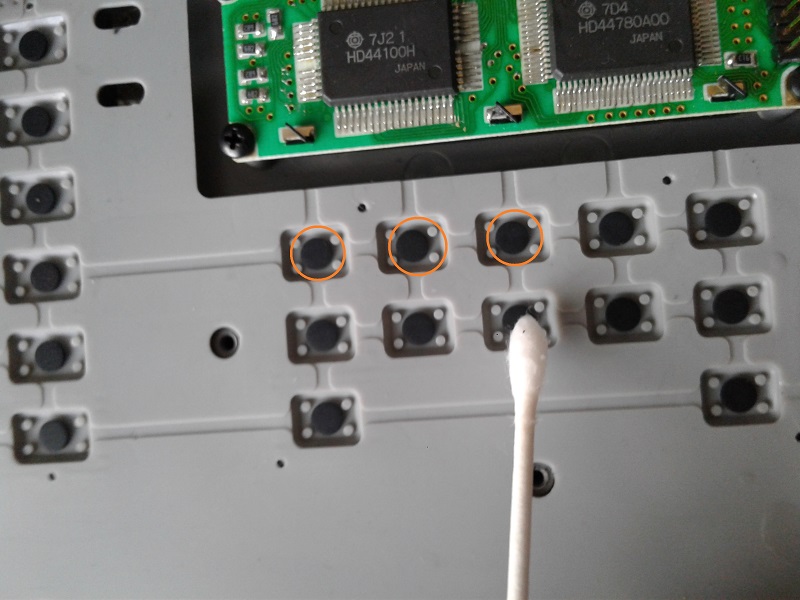
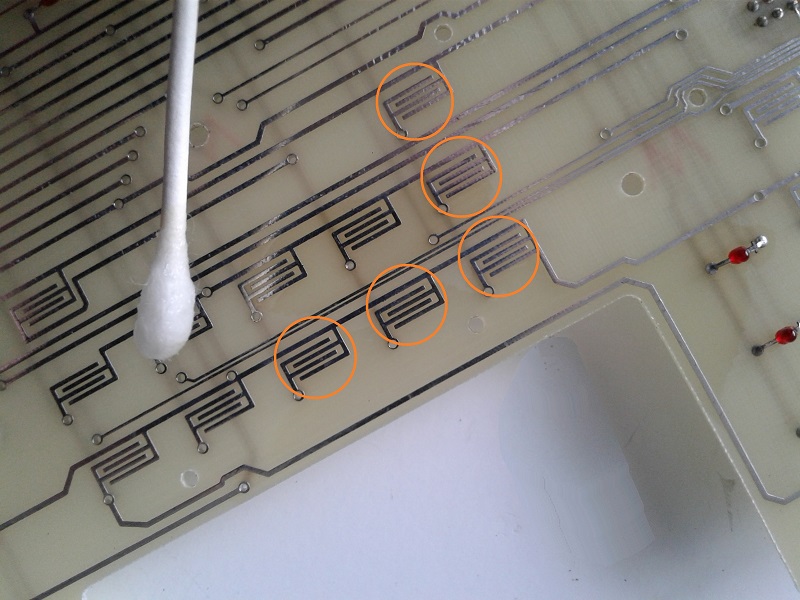
And there you have it. Enjoy your responsive, like-new switches.
[Want to go searching for a project? Follow these links to find drum machines and samplers or synthesizers in conditions ranging from fair to non-functioning.]
About the author: Craig Anderton is an internationally recognized authority on musical technology. As a musician, producer, and engineer, he has played on or produced over 20 albums and has mastered hundreds of tracks. He has authored over 35 books and more than 1,000 articles for Guitar Player, Sound on Sound, Electronic Musician (which he co-founded), Pro Sound News, Mix, and several international publications. Visit his website here.
